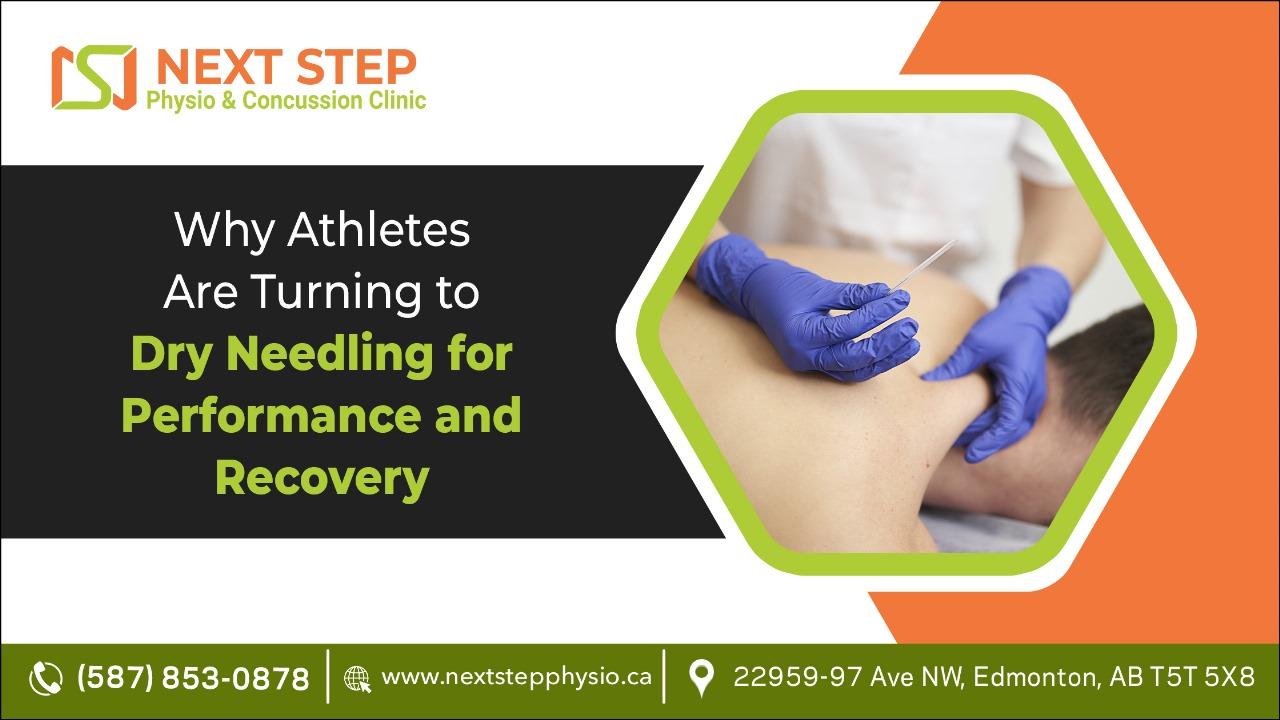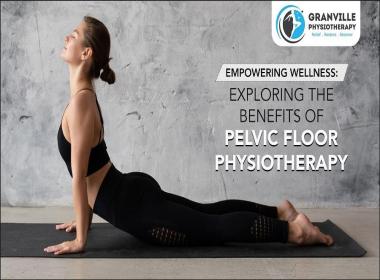
Sports physiotherapy focuses on the prevention, assessment, treatment, and rehabilitation of injuries linked to sports and exercise. Sports physiotherapists collaborate with athletes across all skill levels, ranging from recreational to professional. To aid in their recuperation from injuries, boost their performance, and mitigate the risk of future injuries. Sports physiotherapy in Edmonton aims to maximize athletes' physical health and performance while minimizing the impact of injuries, allowing them to participate in their chosen sports safely and effectively.
What is Dry Needling
Dry needling is a therapeutic method used by some physical therapists and other healthcare professionals to address musculoskeletal pain and dysfunction. It entails the insertion of thin, solid needles (similar to acupuncture needles) into precise locations in the body, identified as trigger points or myofascial trigger points. These trigger points are typically tight bands of muscle or knots that may be contributing to pain, restricted movement, or muscle dysfunction. The aim of dry needling is to stimulate the trigger points and elicit a local twitch response, which is believed to help alleviate muscle tension, enhance blood circulation, and stimulate the body's innate healing processes.
Why Are Athletes Turning to Dry Needling for Performance and Recovery
Athletes are increasingly turning to dry needling as a complementary therapy for performance enhancement and recovery due to its potential benefits in several key areas:
Muscle Relaxation:
Tight muscles can restrict movement and impair athletic performance. Dry needling helps promote muscle relaxation by releasing tension and enhancing blood flow to the affected area. This can enhance flexibility, mobility, and overall muscle function, which are essential for optimal athletic performance. Here's how dry needling is used in muscle relaxation within sports physiotherapy:
Targeting Trigger Points: Sports physiotherapists identify trigger points, which are hyperirritable spots in muscles associated with tightness and pain. By inserting needles directly into these trigger points, dry needling may aid in releasing muscle tension and promote relaxation.
Improving Blood Flow: Dry needling stimulates blood flow to the affected muscles, promoting the delivery of oxygen and nutrients while removing waste products. This increased circulation helps reduce muscle stiffness and soreness, enhancing overall muscle function.
Releasing Myofascial Restrictions: Myofascial restrictions, characterized by tightness and adhesions within the fascia surrounding muscles, can limit the range of motion and contribute to muscle imbalances. Dry needling helps release these restrictions, allowing for improved flexibility and mobility essential for optimal athletic performance.
Improved Muscle Activation:
Dry needling can stimulate muscle fibres and enhance neuromuscular function, leading to improved muscle activation and coordination. By focusing on specific muscle groups or areas of dysfunction, athletes can optimize their movement patterns and performance during training and competition. Here's how dry needling is utilized to achieve improved muscle activation within sports physiotherapy:
Facilitating Neuromuscular Response: Dry needling elicits a neuromuscular response, triggering a cascade of events that promote muscle activation and coordination. This response may involve the release of neurotransmitters, such as endorphins and serotonin, which can enhance muscle function and overall performance.
Addressing Muscle Imbalances: Imbalances in muscle activation and coordination can lead to inefficient movement patterns and an increased risk of injury. Dry needling can help address these imbalances by targeting overactive or underactive muscles, promoting optimal muscle recruitment and balance.
Faster Recovery:
Athletes often undergo rigorous training regimens that can lead to muscle fatigue, microtrauma, and delayed onset muscle soreness (DOMS). Dry needling has the potential to expedite the recovery process by diminishing inflammation, promoting tissue healing, and relieving muscle soreness. This allows athletes to recover more quickly between workouts or events, minimizing downtime and maximizing training adaptations. Here's how dry needling is employed to promote faster recovery in sports physiotherapy:
Promoting Tissue Healing: Microtrauma, such as small tears in muscle fibres, commonly occurs during intense training sessions. Dry needling can stimulate the body's natural healing response by promoting the production of growth factors and facilitating the repair of damaged tissues. This accelerates the healing process and allows athletes to recover more quickly from training-induced injuries.
Relieving Muscle Soreness: Delayed onset muscle soreness (DOMS) can significantly impact an athlete's ability to train effectively. Dry needling helps alleviate muscle soreness by releasing tension within tight muscles and promoting relaxation. This provides immediate relief and enables athletes to resume training sooner without experiencing prolonged discomfort.
Prevention of Injuries:
Addressing muscle imbalances, trigger points, and areas of tension through dry needling can help prevent injuries by improving biomechanical alignment and reducing the risk of overuse or compensatory movements. By maintaining optimal muscle function and mobility, athletes can reduce their susceptibility to common sports-related injuries. Here's how dry needling is utilized in the prevention of injuries within sports physiotherapy:
Improving Biomechanical Alignment: Poor biomechanical alignment can place excessive stress on joints, tendons, and ligaments, increasing the risk of injury during sports activities. Dry needling targets areas of tension and restriction, promoting optimal alignment and reducing the strain on vulnerable structures, thus lowering the risk of injury.
Enhanced Performance:
Ultimately, the combined effects of pain relief, muscle relaxation, improved muscle activation, and faster recovery can translate into enhanced athletic performance. Athletes who incorporate dry needling into their training programs may experience improvements in strength, power, endurance, agility, and overall athletic prowess.
Empowering Athletes:
Next Step Physiotherapy in Edmonton stands as a cornerstone in the world of athletics, offering vital support to athletes of all levels. Through comprehensive assessment, personalized treatment plans, and a focus on both recovery and prevention, sports physiotherapy in Edmonton plays a pivotal role in optimizing performance and minimizing the risk of injuries.
Their expertise not only aids in the rehabilitation process but also empowers athletes to achieve their goals safely and sustainably. As the demand for athletic excellence continues to rise, the importance of sports injury physiotherapy as an integral component of sports medicine remains undeniable, ensuring that athletes can pursue their passion with confidence and resilience.
Also read about:
Understanding Demat Account Trading Account Maintenance Best Practices
Best Furniture For Home in Dubai
WHAT ARE THE TOP TRENDS MATTRESSES IN UAE








